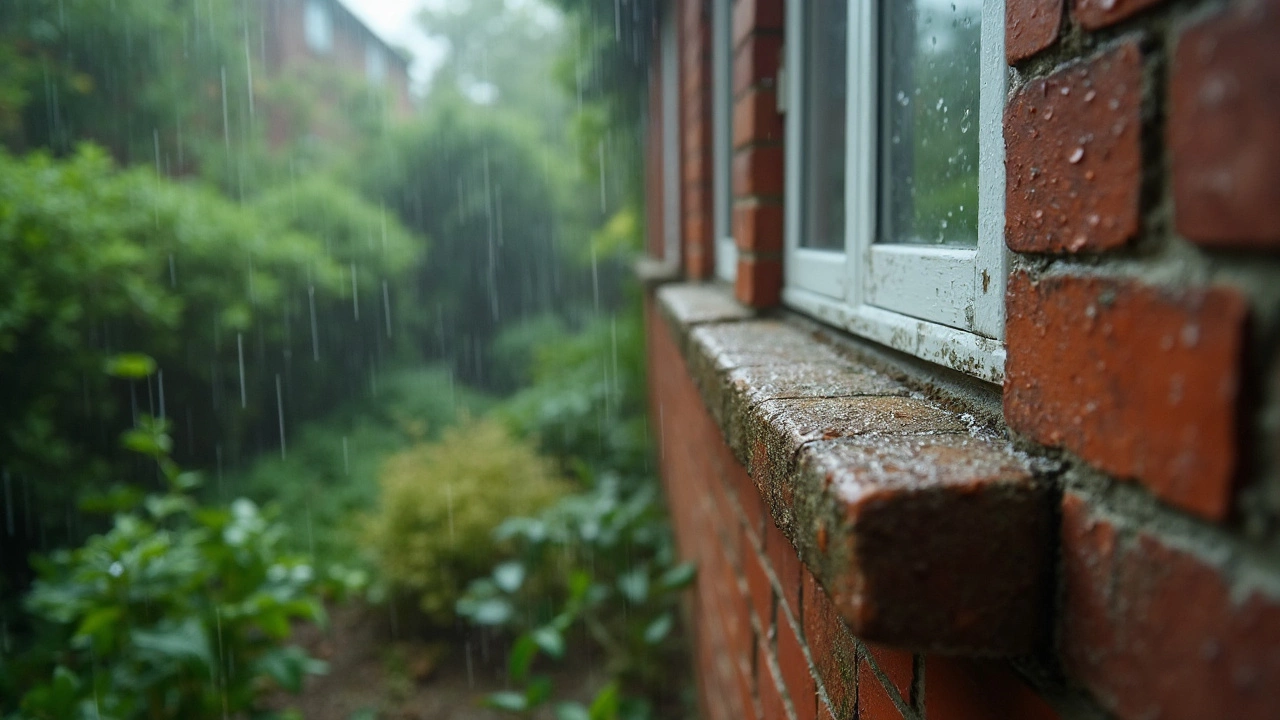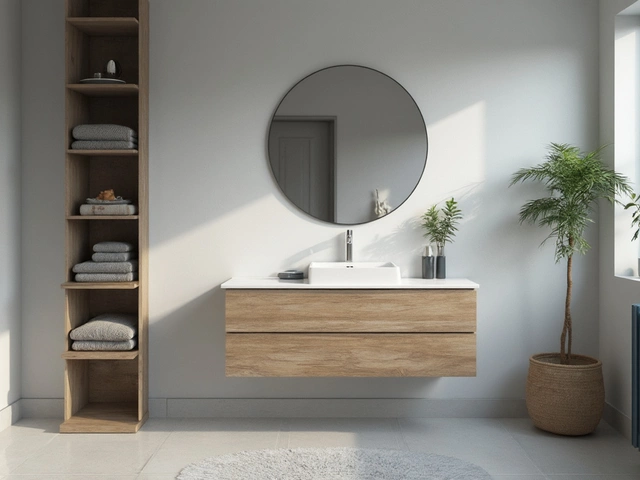Buying a new home feels like you’re getting a fresh start—no old pipes, no weird smells left behind, and definitely no mold, right? Hate to break it to you, but new builds can get mold just as easily (sometimes even easier) than older homes. Here’s why: all the materials used in new construction—wood, drywall, even the fancy insulation—can soak up moisture like a sponge. And if they get wet and don’t dry out quick, mold isn’t far behind.
Imagine the timeline: framing goes up, then drywall, then windows and doors—all in a rush so the place is ready for closing day. If it rains, or if construction happens fast and something stays damp? That’s prime mold territory. Builders aim to get homes “weather-tight” fast, but sometimes water sneaks in or building materials were stored outside, soaking up humidity before installation.
Here’s the thing: you can’t count on “brand new” to mean “mold-proof.” It’s way more common than most people think, and if you catch musty smells or see odd streaks on walls—even in a home that still smells like fresh paint—you’ll want to act fast.
- Why New Homes Get Mold
- Signs of Mold in Fresh Builds
- How to Prevent Mold Early
- What To Do If You Spot Mold
Why New Homes Get Mold
It sounds strange at first, but new homes are at serious risk for mold. People assume only old, damp places have problems, but when it comes to new builds, all that fresh construction can be a perfect setup for mold to sneak in.
New construction moves fast. If materials like wood and drywall show up at the job site and get rained on, sometimes they sit damp for days before getting sealed up inside the walls. That moisture doesn’t just disappear. When you close up a house before it’s fully dry, mold can start growing behind the walls where you can’t see it—sometimes within 48 hours of water exposure.
Let’s break down some big reasons why mold happens in new homes:
- Wet Building Materials: Lumber and drywall can collect water or sit in a humid warehouse before construction even starts.
- Construction Moisture: Processes like painting or using concrete put tons of moisture in the air. If the home gets sealed up too early, all that moisture gets trapped inside.
- Poor Ventilation: Brand-new homes are built tight to save energy. That’s good for heating bills, but if moisture can’t escape, mold finds it way easier to grow.
- HVAC Issues: Sometimes, builders run air conditioning or heat before the house is finished. Blasting cool air across wet surfaces actually slows down drying and gives mold a head start.
A 2023 industry survey found as much as 50% of reported mold issues happened in homes less than three years old. Check this out:
| Year Built | % of Homes with Mold Issues |
|---|---|
| 0-3 years | 50% |
| 4-10 years | 30% |
| 11+ years | 20% |
Bottom line? Mold isn't just an old house problem—new homes can hide it, too. Spotting the risk early makes all the difference, especially before you settle in.
Signs of Mold in Fresh Builds
It’s easy to think mold only pops up in old, damp basements, but even shiny-new homes aren’t immune. The trouble is, catching it early in a new build isn’t always obvious. You can’t always spot a patch of fuzzy green in the corner right away. Sometimes the warning signs are hidden or just plain weird.
First off, trust your nose. Mold has a distinct musty or earthy smell, kind of like wet socks that never dried. If a fresh build smells odd—especially after you run the AC, take a hot shower, or it rains—that’s a red flag. Even well-painted new drywall can trap moisture behind it, and you might notice the odor before you see anything weird.
When you’re looking around, check for these signs:
- Staining or discoloration. Watch for brown, black, or even pinkish spots on walls, around windows, or the ceiling. Don’t ignore streaks, because that’s often water that never fully dried.
- Peeling or bubbling paint. Paint bubbling off walls? That often signals hidden moisture, and could mean mold’s trying to break through underneath.
- Allergy-like symptoms. If you or your family suddenly start sneezing, coughing, or scratching your eyes a lot more inside than outside, mold could be messing with the air. Max, my dog, once started sneezing in a new home we visited—turned out there was mold hiding behind the cabinets!
- Condensation. See water beading on the inside of windows, especially on cool mornings? That’s a sign humidity's high and air isn’t moving enough. It creates a perfect mold habitat, especially around window frames and sills.
- Visible mold growth. This one’s a no-brainer, but don’t expect just green or black fuzzy patches. Mold can also look white, pink, or even orange, especially in bathrooms or laundry rooms.
Some folks miss these signs because they’re too busy with move-in excitement, or just trust everything’s flawless because it’s new. Take a closer look, especially in places that stay cool or damp: behind appliances, inside closets, under sinks, or in unfinished basements. The sooner you find a problem, the easier it is to keep your new place safe and comfortable.

How to Prevent Mold Early
Catching mold issues in new builds early saves a lot of headaches (and cash). The best defense is making sure moisture never gets comfy indoors. Builders and homeowners both have solid ways to keep things dry from the start.
First, make sure construction materials are dry before they’re sealed behind walls. Ask your builder directly—were the framing and drywall checked for damp spots before installation? It’s a basic step, but surprisingly often skipped if schedules are rushed or it’s been a rainy season.
Good ventilation is your next line of defense. Fans in bathrooms, range hoods in kitchens, and a proper HVAC system make a huge difference. Fresh air moves out that sneaky humidity after showers, cooking, and even just daily living (hello, laundry day). It’s a simple fix that most builders include, but double-check those fans actually vent outside, not just into the attic where moisture can hide and cause trouble.
- Use dehumidifiers the first few months after moving in. It’s not overkill, especially if it’s summer or your area gets a lot of rain.
- Keep an eye out for condensation on windows or walls during the first winter. That’s a hint moisture’s getting trapped inside.
- Don’t ignore musty smells, even in closets or basements you don’t use much. Mold can grow in hidden spots fast if there’s a small leak or trapped humidity.
- If you can, check under sinks and behind appliances (like the washing machine) regularly for drips. Plumbing connections in new builds can shift after settling.
To really drive home why all this matters, here’s a quick look at how fast mold can start growing if you slip up on moisture control:
| Material | Time to Mold Growth (After Water Exposure) |
|---|---|
| Drywall | 24-48 hours |
| Wood framing | 48-72 hours |
| Carpet & Padding | 24-48 hours |
That timeline’s short. Basically, if something gets wet and isn’t dried or fixed right away, mold can take over before you know it. Stay on it those first few months—a little effort now beats a big mold-removal bill later.
What To Do If You Spot Mold
So, you walked into your brand new home and noticed a musty smell or strange dark patches creeping along the wall. First, don’t panic. Mold in new builds happens, and handling it early saves money and headaches.
If you spot mold, here are the steps you should actually take:
- Document Everything: Take clear photos and videos of the mold, including close-ups and wider shots to show the location. Note the date and any changes in how it looks or smells.
- Report to Your Builder or Warranty Provider: Most new builds come with a warranty, so report it ASAP. The sooner you tell them, the more likely it gets fixed without cost to you. Mention that mold in new builds is a serious health concern—kids, seniors, and even pets (Max once broke out in sneezing fits when we had a mold patch behind our dryer) are more vulnerable.
- Get a Professional Mold Inspection: Don’t try to scrub it off yourself, especially if the area is bigger than a couple of square feet. According to the EPA, you should call in the pros if the mold covers more than 10 square feet.
- Fix the Moisture Problem: Mold won’t grow if your home stays dry. Whether it’s a leaky window, poor ventilation, or leftover damp from construction, get to the root of the moisture fast. It doesn’t matter how many times you wipe the mold—if water keeps getting in, it’ll keep coming back.
- Ask for a Clearance Test: After cleanup, request air quality or clearance testing. This checks if spores are actually gone, not just invisible to your eye.
Here’s a table with just how common mold in new builds is, plus why it’s worth addressing right away:
| Issue | Rate (%) | Source |
|---|---|---|
| New builds with mold found during inspections | 27% | HomeAdvisor 2023 survey |
| Homeowners who don’t fix moisture source | 64% | Mold Remediation Institute 2022 |
| Mold-related warranty claims, first 2 years | 8% | Builders’ Risk Report 2024 |
Lastly, don’t just air the place out and hope for the best. Spores linger, and health impacts can sneak up. If you’re renting while waiting for fixes, check if your builder covers that cost—many will if the house is unlivable.





